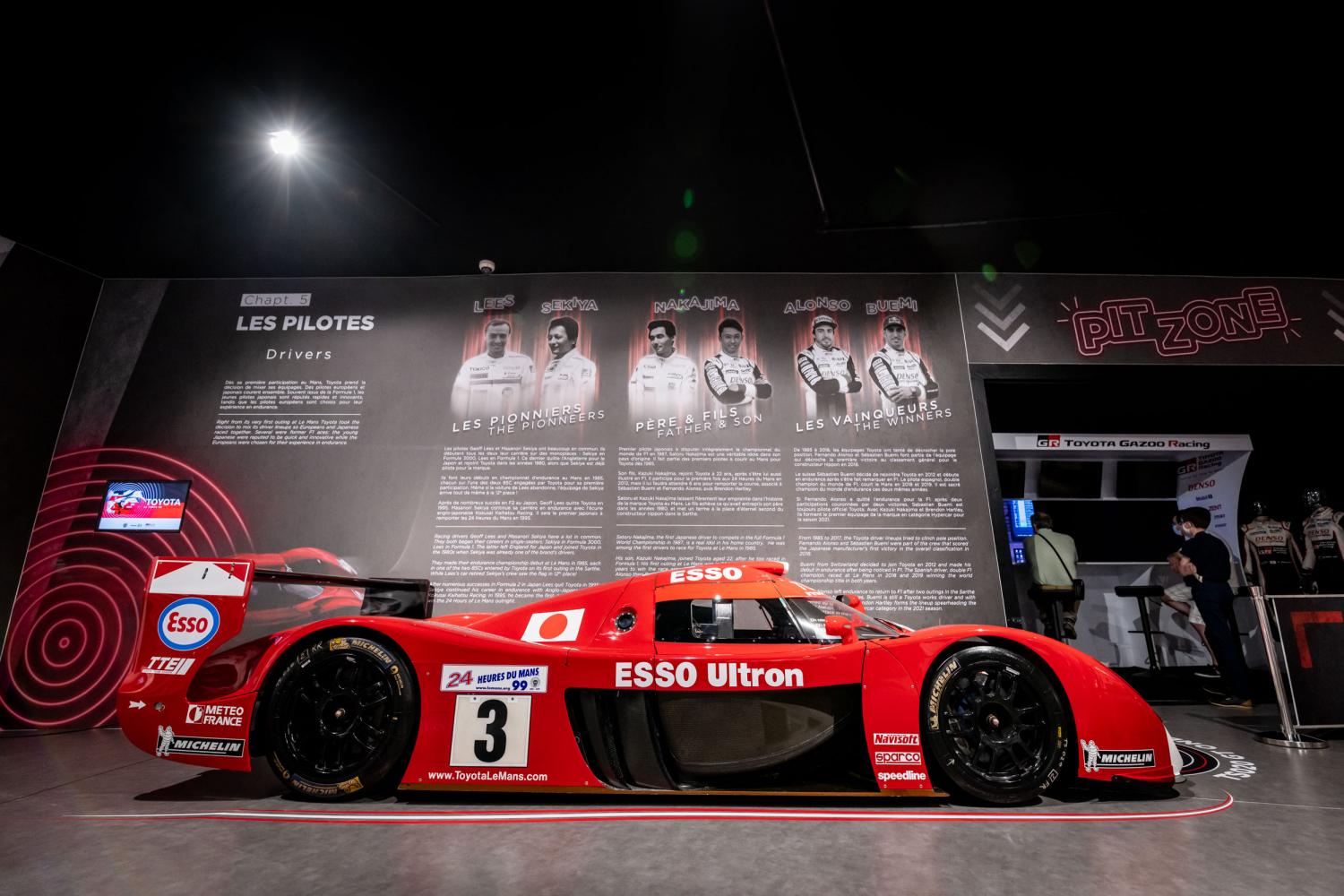Masanori Sekiya, the first winner
In 1985 with his fellow-countrymen Kaoru Hoshino and Satoru Nakajima, he drove the first Toyota to be classified in the 24 Hours of Le Mans in 12th place on the Japanese manufacturer’s first outing in the race. In 1990, he scored his first top 10 finish (6th) followed by second in 1992 and fourth in 1993. In 11 outings in the Sarthe he drove a Toyota on eight occasions. In 1995, he became the first Japanese to win the race outright, but at the wheel of a McLaren with Frenchman Yannick Dalmas and JJ Lehto from Finland.
Geoff Lees and Eje Elgh, the European pioneers
Englishman Geoff Lees and Eje Elgh from Sweden who came from single-seaters (Formula 3 and Formula 2) were the first European drivers recruited by Toyota in 1985 for its maiden outing in the 24 Hours of Le Mans. They both scored their best results in the Sarthe in Toyotas. Lees finished sixth in 1990 with Hitoshi Ogawa and Masanori Sekiya while Elgh saw the flag in the same position in 1993 with George Fouche and Steven Andskar.
Satoru and Kazuki Nakajima, a Japanese dynasty
Satoru Nakajima was Sekiya’s and Hoshino’s team-mate when the trio sealed 12th place in 1985. He became a real idol in his home country after being the first Japanese driver to be classified in the Formula 1 World Championship in 1987, a year in which he was Ayrton Senna’s team-mate.
His elder son, Kazuki also raced in Formula 1 (2007-2009) and he has been one of the stalwarts of Toyota since the brand began racing in the FIA WEC in 2012. Two years later he was the first Japanese driver to set pole position in the 24 Hours. Thanks to his three consecutive wins (2018, 2019 and 2020) he is also the only driver from the Land of the Rising Sun to become a multiple winner at Le Mans. He was crowned world champion at the end of the 2018-2019 season making him the only Japanese to win an FIA world championship title.
Le Mans – four winners for three victories
After three seasons in Formula 1 with Red Bull, Sébastien Buemi swapped to endurance racing and was part of Toyota’s return in 2012: he has remained faithful to the brand ever since. In 2015, he teamed up with Kazuki Nakajima with whom he has shared his three consecutive Le Mans wins in 2018, 2019 and 2020. The Swiss and the Japanese have had two other team-mates.
Fernando Alonso has stated his aim to win the Triple Crown (Formula 1 World Championship, Indianapolis 500 Miles and the 24 Hours of Le Mans) so he quit F1 momentarily to take up the Le Mans challenge. He won his bet in 2018 and 2019 becoming one of the few drivers to have won all the Le Mans races in which he took part. At the end of the 2018-2019 season the Spaniard added the FIA World Endurance Championship title to those clinched in karting (1996) and Formula 1 (2005 and 2006).
After Alonso’s departure (who has returned to Formula 1) New Zealander Brendon Hartley joined Buémi and Nakajima in 2020 scoring his second victory in the Sarthe with his new team-mates. His first came in 2017 at the wheel of a Porsche. The trio has continued in 2021 and won the first race of the FIA WEC Hypercar era on the Spa-Francorchamps circuit in Belgium.
Six pole position laps
Three drivers have scored Toyota’s six pole positions in the 24 Hours of Le Mans and the first one to do so was Martin Brundle in 1999. At the wheel of the iconic GT-One the Englishman lapped in 3m 29.930s, an average speed of 233 km/h.
Fifteen years later (2014) Kazuki Nakajima became the first Japanese driver to achieve this feat. He got round in 3m 21.798s, an average speed of 243 km/h. He repeated this performance in 2018 with a lap in 3m 15.377s (251,072 km/h). In 2017, his fellow-countryman Kamui Kobayashi went down in the history of the Le Mans 24 Hours with a pole position in 3m 14.791s, an average speed of 251,88 km/h making him the new circuit record holder beating Hans Stuck’s mark set in a Porsche in 1985.
He bagged his second pole position in 2019, and then became the first Hyperpole setter in the history of the race in 2020 in a new qualifying format regrouping the six fastest cars in each of the four categories.
The other Toyota heroes
Besides the pioneers, pole setters and winners mentioned above, many drivers have defended Toyota’s colours in more than three decades of history: Kenny Acheson, Steven Andskar, Marco Apicella, Didier Artzet, Paolo Barilla, Thierry Boutsen, David Brabham, Ross Cheever, Emmanuel Collard, Mike Conway, Anthony Davidson, Johnny Dumfries, Teo Fabi, Juan Manuel Fangio II, George Fouche, Beppe Gabbiani, Eric Helary, Kaoru Hoshino, Eddie Irvine, Stefan Johansson, Alan Jones, Masami Kageyama, Ukyo Katayama, Ralf Kelleners, Jeff Krosnoff, Yuji Kunimoto, Jan Lammers, Nicolas Lapierre, Jose Maria Lopez, Mauro Martini, Allan McNish, Hidetoshi, Mitsusada, Naoki Nagasaka, Tiff Needell, Hitoshi Ogawa, Pierre-Henri Raphanel, Roland Ratzenberger, Roberto Ravaglia, Stéphane Sarrazin, Vincenzo Sospiri, Aguri Suzuki, Keiichi Suzuki, Toshio Suzuki, Keiichi Tsuchiya, Andy Wallace, John Watson, Bob Wollek and Alexander Wurz.
Among them are 10 former and future winners of the 24 Hours of Le Mans having accumulated a total of 13 victories: Paolo Barilla, David Brabham, Johnny Dumfries, Eric Hélary, Stefan Johansson, Jan Lammers, Allan McNish, Andy Wallace, Alexandre Wurz and Martin Brundle.
The temporary exhibition is open now and runs until 20 February 2022.
Head to Musée des 24 Heures du Mans to find out more.


